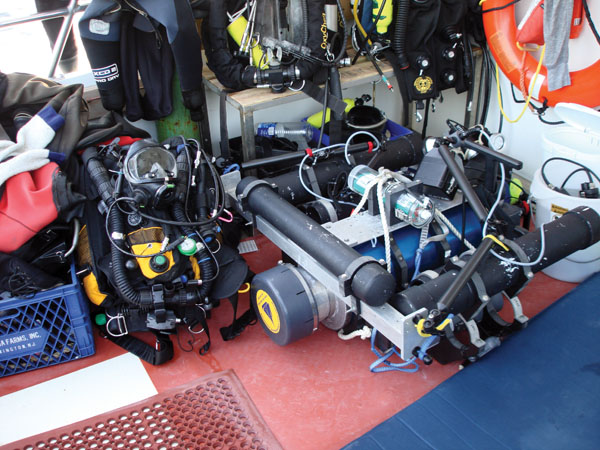Rocks Star Video Images Help Connect the Dots

On one occasion, Evan Kovac’s imaging lab was filming the features of a lake in Yellowstone in 3D for the National Park Service. With extinct hydrothermal features right next to active methane seeps, and an archaeological component as well, the lake has a lot to offer. During the shoot the team came across some ‘semi-interesting’ rocks in the middle of a featureless bottom, so they rolled the cameras on them for a few minutes and never gave them a second thought. Back at the lab, as a demo reel was being cut the rock footage almost got left on the editing room floor. “They weren’t very interesting or engaging, to us anyway,” Kovacs remembers, “But we kept some of it in because they just seemed so out of place in the lake.”
Screening the footage at a convention caught the attention of one scientist. He looked and then walked away but returned to look again… and again. After an hour or so of this we asked if we could help him and so his questions began… Where did you film this? How deep? What else was in the area? Was there – insert technical rock name here – around? The images captivated him. He called up a friend to come by. They watched the film clip several dozen times and had us send out the original tapes. After countless hours of poring over the original footage, they determined that we had by chance filmed their ‘missing link’, a pile of rocks that helped them connect their research to the super volcano in Yellowstone and its previous eruptive events.
This whole sequence of events was pretty much accidental, both the filming of the rocks and the scientist viewing the film. The thing that struck me most was that they’d been trying to get ROVs to film parts of this lake for years – and it was only 50 feet (15m) deep! They weren’t divers and didn’t have access to any divers and so their research languished until luck brought them by our monitor on that convention floor.
So, why tell this story? Many of us dream of making a difference, perhaps it’s a scientific discovery, taking an iconic photo, finding the next Titanic, exploring a subsea frontier. Whatever it may be, it holds appeal and we are attracted. Yet it’s daunting too. Always it’s expensive. Often it’s far away. Lots of excuses why we can’t do it. Our rock photos were taken in shallow waters accessible to anyone to explore, to photograph, to help out. Some skills, the right attitude and a little initiative… amazing what can happen when they come together. These pictures could have been taken a decade ago, and maybe they were, but they never got into the hands of the scientists who have spent their lives learning how to interpret such things… things that we divers get to see with our own eyes almost as a matter of routine. It’s fun to imagine what a couple of trained open water science divers might accomplish with some topped up cylinders, an empty memory card and the desire to help!







